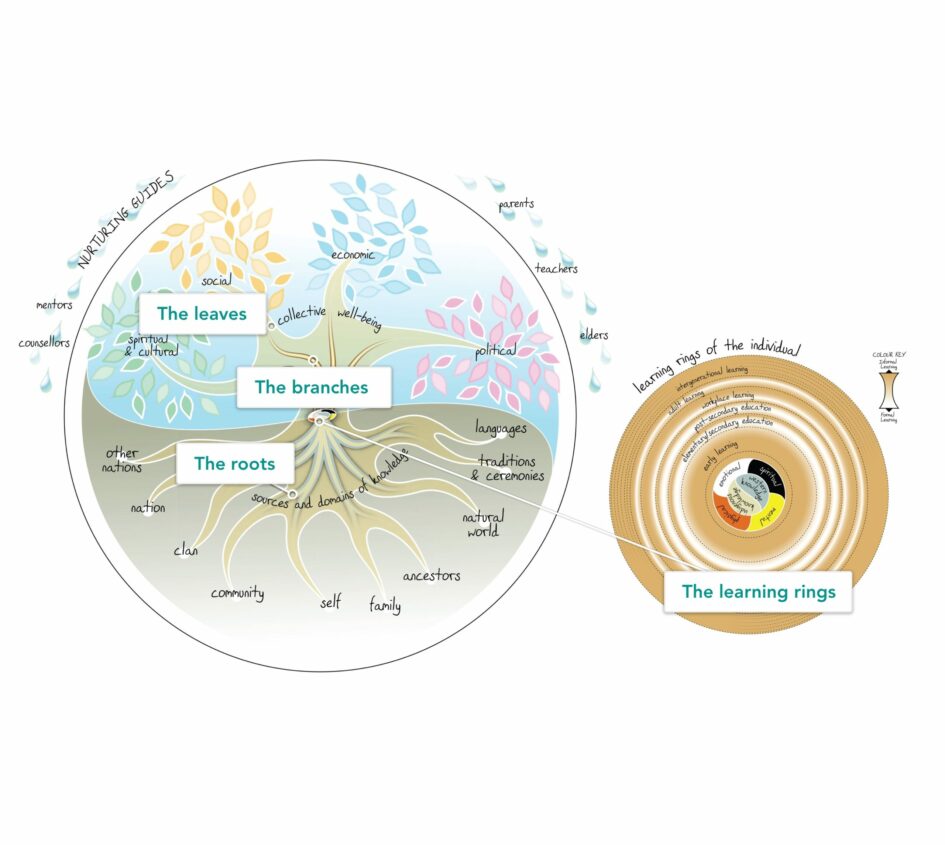“Know how important you are, you are the one they depend on. You need to be grounded, strong of character and you need to take care of yourself”
– Chancellor Darlene McIntosh
I appreciated that Nigaan Sinclair opened his keynote speech with a personal teaching story. It immediately grabbed my attention as someone who will soon be in the position of a new teacher. In 2000 he started his first teaching job as a drama teacher at one of the largest high schools in Winnipeg. The play that year was Fiddler on the roof and he knew nothing about Jewish culture so he went to Blockbuster, found the movie, watched it, and decided to replicate it in the play. This school however was predominantly Jewish and his choices to match the inaccurate movie offended the kids because it was misrepresenting their culture. His response to this was to run to the synagogue and talk to the rabbi, learn about the culture, and reach out to the kids and their community in order to make the proper changes needed. What resulted was the kids teaching each other how to dance, parents teaching language, and grandparents helping teach the culture. When they did hold the play the Rabbi showed up to the show, shook his hand, said “not bad”, and walked out of the theater.
The point of this story is to show how he as a new teacher connected with the community, specifically with the synagogue and learned about their culture. At the end of it he could teach Jewish culture after previously knowing nothing, he put on a Christmas play and made lifelong friends. We can do that with indigenous culture as well. This story sets an example to us as teacher candidates that even with little prior knowledge or experience we can have a positive impact through our willingness to make connections and learn about something new.
How are we as a country going to get along? How are we advancing our relationships? Politics are certainly not creating unity in our country. Professor Sinclair believes that incorporating indigenous culture in the classroom will help.
In 2008 there was a goal set out for 500 indigenous PhDs in 500 years, they met that goal in 3 years. This shows how indigenous people have been vastly underestimated. The original goal is insulting and the fact that it was met 166x faster, 497 years sooner than set is almost comical. It is silly that the goal was so far off the mark.
In his community there was a legal treaty with the British crown that went well for 90 years, but after a while they decided the people were a barrier to civilization so in 1907 they were forcibly removed from the community. It was the most successful agricultural community in Canada for a while but now they are on lands that have been ravaged by a number of floods. 2000 people were removed from their homes due to flooding this year, and there are 48 people still in hotels from the 2011 flooding. This is a significant trauma to live through a pandemic in a hotel after 10 years of being displaced from their homes. Sinclair stated that his is not a woe-is-us comment, but the fact remains there are more encampments and more drug abuse as a result of this tragedy. Indigenous peoples make up 90% of incarcerated people but only make up 20-30% of the population. When you remove people from their homes there is a direct line straight to jail.
One of the best practices is teaching young indigenous men on the land and teaching them how to make fires. When young men are removed from communities there is a burden placed on the families, especially the women. Making a fire is about taking care of your family, putting in the work so other people don’t have to and being RESPONSIBLE. In this day and age we encourage young men to be hyper-masculine and to run away; being a warrior is to be as violent as possible, but in this community being a man is tied to being able to make a fire. It is actually a wedding tradition; if the groom can’t make a fire, the brides family can decide to cancel the wedding.
First Nations Learning Model:
Roots are what you learn at home or in your religious place. We have cut off the roots of a lot of indigenous individuals (what is my clan, where do I come from, what is my language?). Can you be your full self with no roots? This comes up with adopted children and is why kids drop out, they can not grow branches without roots, so we must help them develop their roots.
“This is not our fault, it is our inheritance”
– Niigan Sinclair
Canadians are also missing roots, we taught Canadians that Indigenous people don’t matter (lack of recognition, lack of power, lack of language), and Indigenous land does not matter as well. We are missing our relationship with Indigenous peoples which is the most significant root, we are all here because of Indigenous peoples.
What is the message to young graduating students: please leave, you are done now, go away. We make employable people, not GOOD people. Is there a spot on the curriculum for kindness? Sharing?
What is the difference between primary and secondary? Grades; the number indicating performance, individual marking and with this, there is a loss of community, life values, being kind and committed and empathetic, which are all indigenous ways of learning.
When indigenous students succeed, everybody succeeds; when we make space, everybody benefits.
